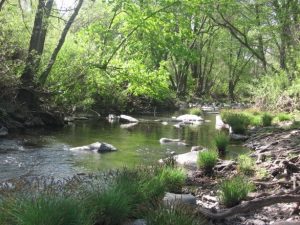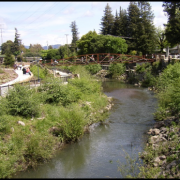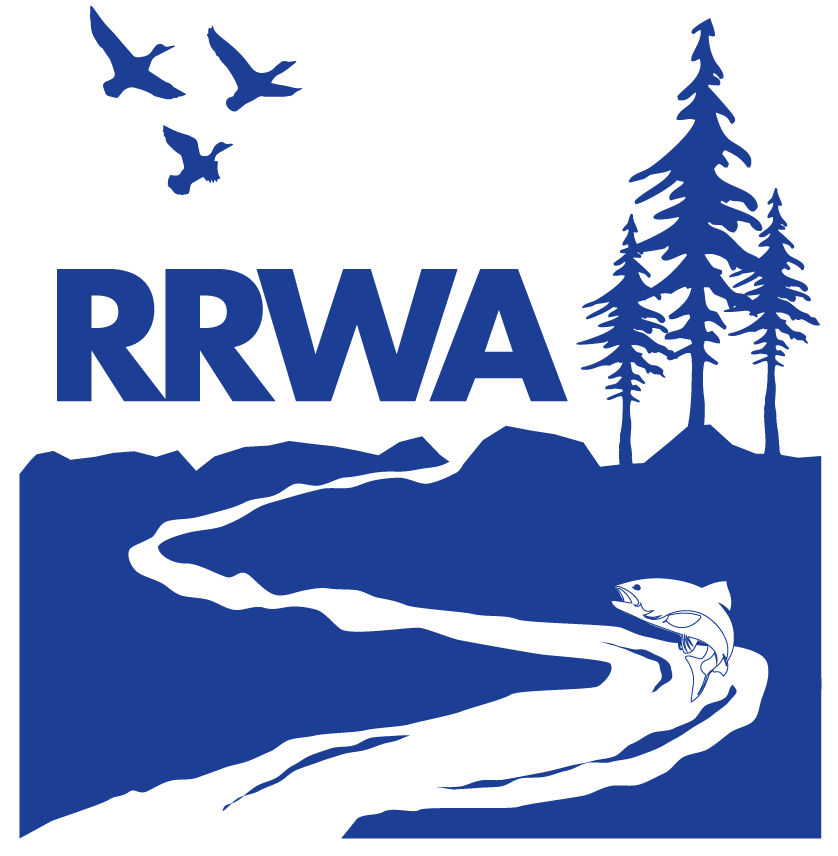Riparian Plants and Their Humble Little Job
It goes without saying that plants are some of the most beautiful and important organisms we have on our planet. As a child I was always interested in the world of plants. A world seemingly so familiar yet so estranged from common understanding. As kids we run barefoot and play on the soft grass, take refuge under the shade a tree provides amidst a hot California day, and take a deep breath of the fresh air the leaves so selflessly gift to us. All while the plants remain sessile, unassuming, and ask nothing of us. In grade school we are taught of the “important” things that plants provide in terms of food and materials to build our world. It was not until continuing my education in college that I began to fully grasp the ecosystem services plants truly offer to us. As we built our world through the power of plants, engineered our cities, pushed our civilization to the likes of which this world has never seen before, we find every alteration requires a new remediation. And as we look to science to provide the next breakthrough it is often plants, unassuming, and quietly taking matters into their own hands.
We built our cities and found ways to channel water, divert creeks, and move storm water out as fast as we can to provide a suitable place to develop upon. Rightly so, we do not want our homes and our businesses flooding year in and year out. And yet, with this approach we have willingly surrendered so many services nature often provides us. Cities developed an underground storm drain system, a network of pipes beneath our streets and homes solely dedicated to diverting storm water, as a way to compensate for the impervious concrete surfaces we cast upon the land. Without the natural uptake of rain through pervious soils storm water quickly runs into our gutters, into our storm drains, and into our creeks. Unsurprisingly, this increases the possibility of pollutants being conveyed from our City streets and into our waterways. Pathogens, for instance, have become a pollutant of concern in which our paved and engineered world has perpetuated from a water quality perspective. The Regional Water Quality Control Board has identified particular concerns associated with our urban developed world such as dog waste accumulation along pedestrian trails or back yard drains, accidental spills, potentially leaking septic tanks, illegal dumping in storm drains or waterways, and illicit discharges into street gutters. These sources can introduce pollutants of concern which may accumulate on impervious surfaces during dry weather months. During our first rains, rather than decompose and cycle into the soils, pathogens can flow into our storm drain system and directly into our creeks without any treatment. It is here, our wonderful riparian plants quietly grow and act as the last line of defense.
Riparian species such as sedges, rushes, cattails and so many others have the amazing ability to uptake organic and inorganic pollutants. As storm water contaminated with pathogens passes through riparian species, the porous membrane called xylem tissue uptakes water from its roots to its shoots, acting as a filtration system which studies have shown can effectively filter bacteria such as E. Coli and Enterococcus up to 90%. As a function of species composition, species density, and water surface contact time, pathogen intake from riparian species can efficiently and cost effectively decrease pollutants in our waterways. Some species are more effective than others, and studies are constantly underway to find ways in best applying riparian species to constructed wetlands and waterways for the goal of pathogen intake. Here in Sonoma County we have basket sedge (Carex barbarae), nutsedge (Cyperus erogrostis), grey rush (Juncus patens), broadleaf cattails (Typha latifolia), smartweed (Polypogon hydropiperoides) just to name a few.

As the rains fall, our gutters flow, and our creek begin to rise, I implore you to think about our silent saviors growing at the toe of the bank.
- Find a local creek trail and observe what is growing in the channel.
- Educate yourself and others on the importance of our native riparian vegetation.
- Join a volunteer group and help with a restoration project along a creek.
- Go yourself and plant a native species along a creek bank. Work with your City or Town representatives to ensure plant species and creek bank location is appropriate.
- Get your kids involved, or your neighbors, or your friends.
- Take a look at the Streets to Creeks website (streetstocreeks.org) to learn about other ways you yourself can take steps in your daily life to reduce pollutants in storm water runoff.
- Perhaps look at installing a Low Impact Development (LID) feature in your home landscaping to capture runoff and naturally filter pollutants before they ever enter the City storm drain system.
Next time you find yourself along a creek, take a look at the plants along the water’s edge and send thanks to them for quietly doing their humble little job.




